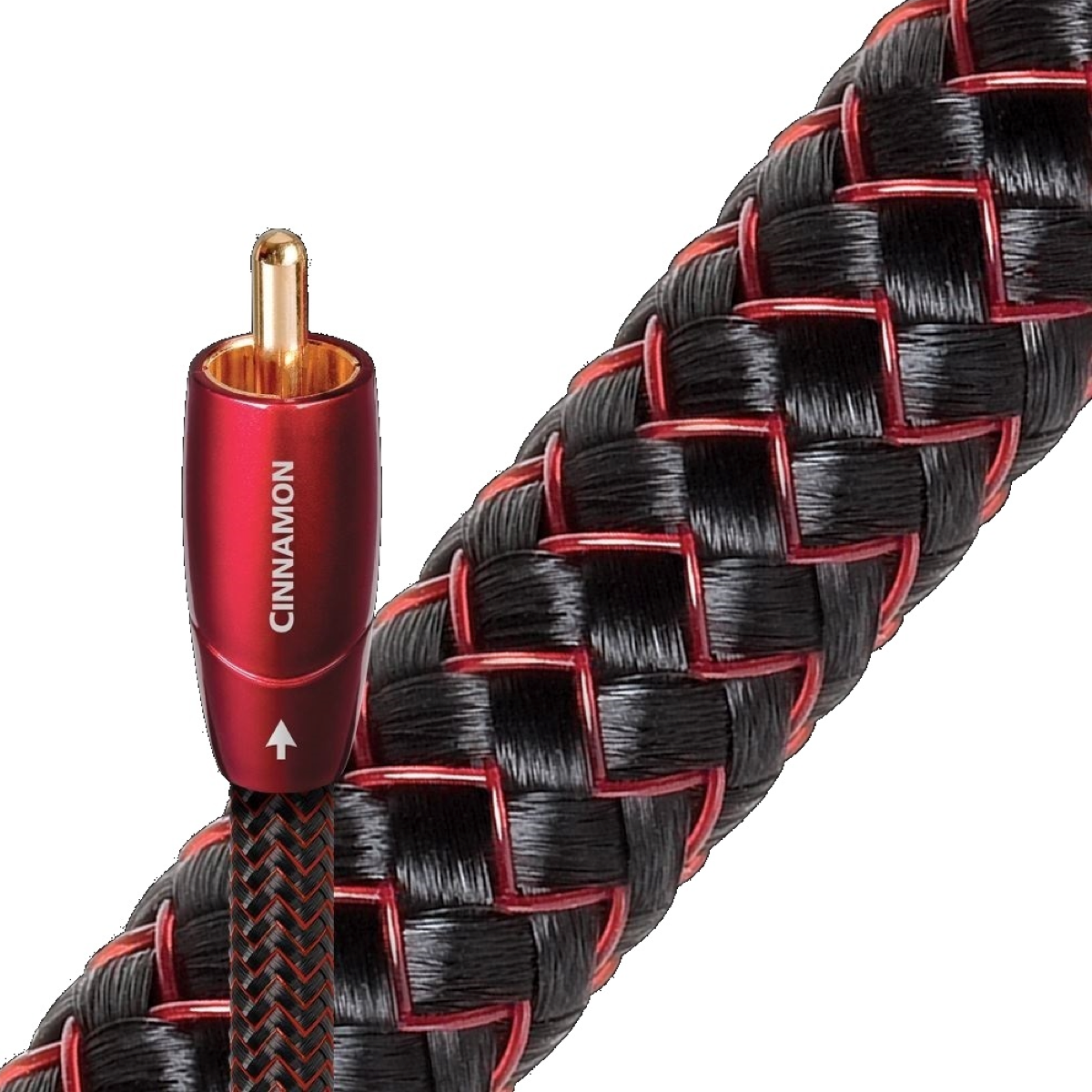

AudioQuest Cinnamon - Digital Coaxial Cable
Includes GST of Rs. 1,487

GET GST INPUT
Ever wondered why speakers, amplifiers, projectors etc. come with a slightly heftier price tag in India compared to their overseas counterparts? Well, part of the answer lies in our country's Goods & Services Tax (GST).
But here's the kicker: Don't let that GST input slip through your fingers! Especially when some of the products we supply carry a GST rate of 18% and 28%.
At AVStore, we provide you with a GST compliant invoice for every purchase.
Simply put in your GST number during the checkout to avail an offset.

- Description
- Specifications
- Reviews
CINNAMON DIGITAL COAXIAL
AudioQuest Digital Coax cables are designed to minimize distortion across an extremely wide bandwidth. For many applications, the speed of digital communication is important. Most visibly, “speed” is about transferring large files as quickly as possible, or carrying enough data for HD video. For Digital Coax audio “speed” is critical not because of how-much how-fast, but because time relationships within a digital stream are critical to the reconstruction of the analog waveform that brings information, music and joy to our ears. Time-based damage (jitter) to this information within the data package makes the sound small and flat instead of 3D, harsh and foggy instead of smooth and clear.
SOLID 1.25% SILVER CONDUCTORS FOR IMPROVED ANALOG PERFORMANCE
Solid conductors eliminate inter-strand distortion, one of the biggest sources of distortion in cables.
METAL-LAYER NOISE-DISSIPATION
It's easy to accomplish 100% shield coverage. Preventing captured radio-frequency interference (RFI) from modulating the equipment's ground reference requires AQ's Noise-Dissipation. Traditional shield systems typically absorb and then drain noise/RF energy to component ground, modulating and distorting the critical "reference" ground plane, which in turn causes a distortion of the signal. Noise-Dissipation "shields the shield," absorbing and reflecting most of this noise/RF energy before it reaches the layer attached to ground.
HARD-CELL FOAM INSULATION
Hard-Cell Foam (HCF) Insulation ensures critical signal-pair geometry. Any solid material adjacent to a conductor is actually part of an imperfect circuit. Wire insulation and circuit board materials all absorb energy. Some of this energy is stored and then released as distortion. Hard-Cell Foam Insulation is similar to the Foamed-PE used in AudioQuest’s more affordable Bridges & Falls cables, and is nitrogen-injected to create air pockets. Because nitrogen (like air) does not absorb energy and therefore does not release any energy from or into the conductor, distortion is reduced. In addition, the stiffness of the material allows the cable's conductors to maintain a stable relationship along the cable's full length, producing a stable impedance character and further minimizing distortion.
FOIL + SILVER-PLATED BRAID SHIELD
COLD-WELDED, GOLD-PLATED TERMINATIONS
This plug design allows for a connection devoid of solder, which is a common source of distortion. Instead of solder, the process employs a high-pressure technique. Because the ground shells are stamped instead of machined, the metal used can be chosen for low distortion instead of machinability.
CINNAMON DIGITAL COAXIAL
AudioQuest Digital Coax cables are designed to minimize distortion across an extremely wide bandwidth. For many applications, the speed of digital communication is important. Most visibly, “speed” is about transferring large files as quickly as possible, or carrying enough data for HD video. For Digital Coax audio “speed” is critical not because of how-much how-fast, but because time relationships within a digital stream are critical to the reconstruction of the analog waveform that brings information, music and joy to our ears. Time-based damage (jitter) to this information within the data package makes the sound small and flat instead of 3D, harsh and foggy instead of smooth and clear.
SOLID 1.25% SILVER CONDUCTORS FOR IMPROVED ANALOG PERFORMANCE
Solid conductors eliminate inter-strand distortion, one of the biggest sources of distortion in cables.
METAL-LAYER NOISE-DISSIPATION
It's easy to accomplish 100% shield coverage. Preventing captured radio-frequency interference (RFI) from modulating the equipment's ground reference requires AQ's Noise-Dissipation. Traditional shield systems typically absorb and then drain noise/RF energy to component ground, modulating and distorting the critical "reference" ground plane, which in turn causes a distortion of the signal. Noise-Dissipation "shields the shield," absorbing and reflecting most of this noise/RF energy before it reaches the layer attached to ground.
HARD-CELL FOAM INSULATION
Hard-Cell Foam (HCF) Insulation ensures critical signal-pair geometry. Any solid material adjacent to a conductor is actually part of an imperfect circuit. Wire insulation and circuit board materials all absorb energy. Some of this energy is stored and then released as distortion. Hard-Cell Foam Insulation is similar to the Foamed-PE used in AudioQuest’s more affordable Bridges & Falls cables, and is nitrogen-injected to create air pockets. Because nitrogen (like air) does not absorb energy and therefore does not release any energy from or into the conductor, distortion is reduced. In addition, the stiffness of the material allows the cable's conductors to maintain a stable relationship along the cable's full length, producing a stable impedance character and further minimizing distortion.
FOIL + SILVER-PLATED BRAID SHIELD
COLD-WELDED, GOLD-PLATED TERMINATIONS
This plug design allows for a connection devoid of solder, which is a common source of distortion. Instead of solder, the process employs a high-pressure technique. Because the ground shells are stamped instead of machined, the metal used can be chosen for low distortion instead of machinability.


